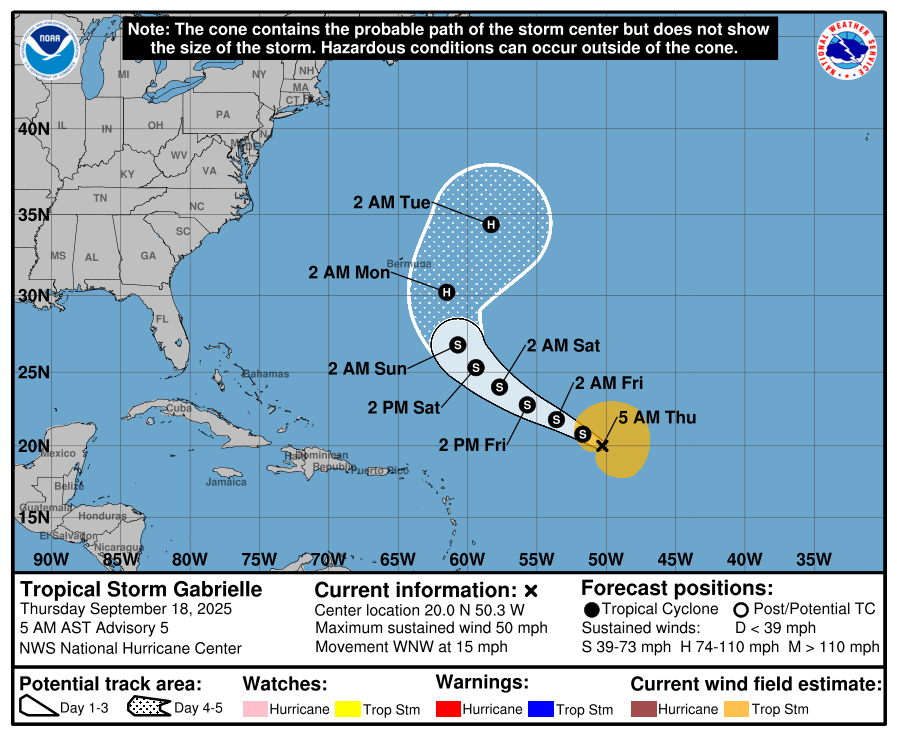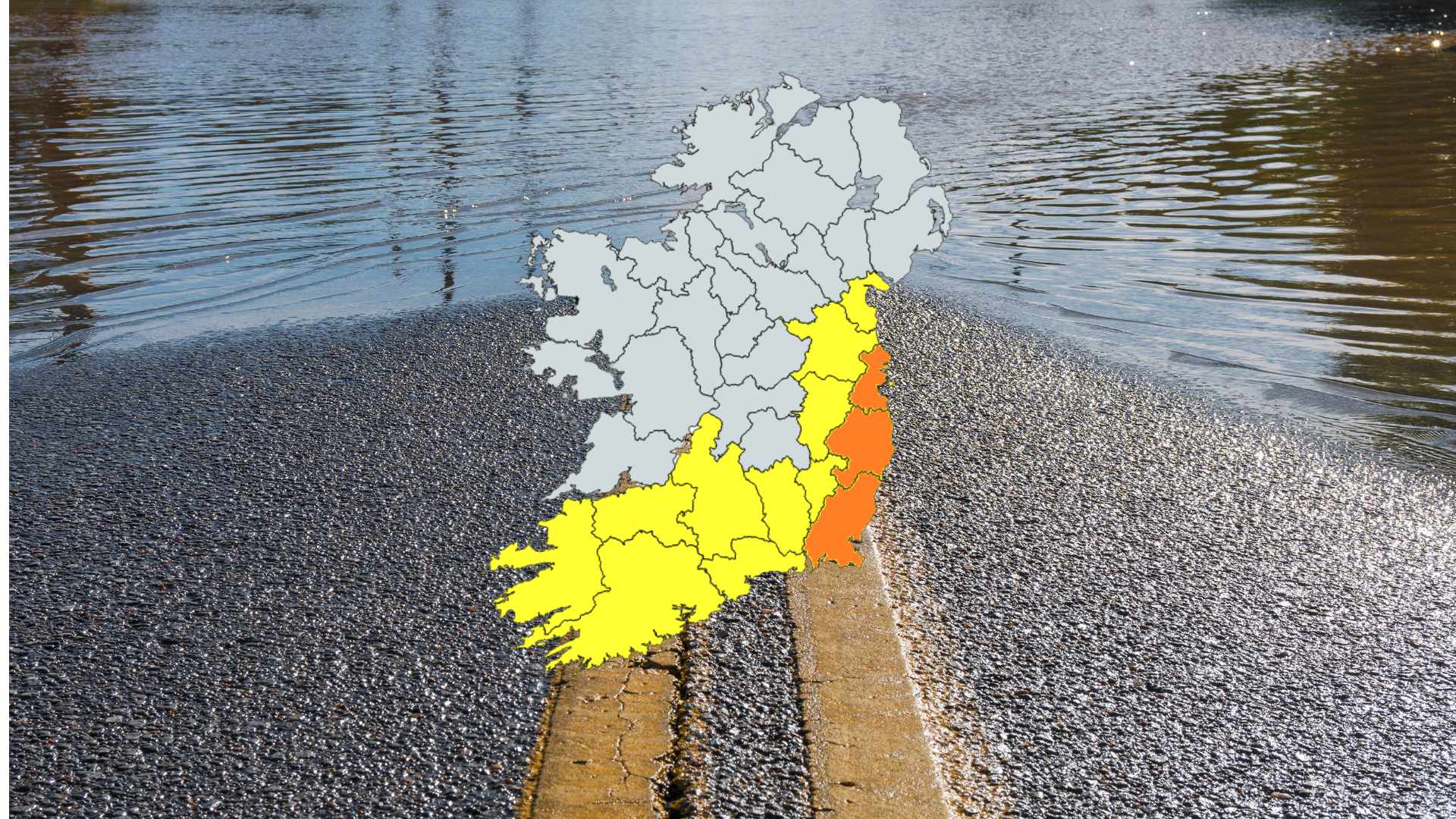
Gabrielle Holds Steady Over Open Atlantic, Poses No Immediate Land Risk

Tropical Storm Gabrielle remains over the central Atlantic with maximum sustained winds near 50 mph (85 km/h), according to the National Hurricane Center.
The storm’s center is located about 845 miles (1,360 km) east of the northern Leeward Islands. It is moving west-northwest at 15 mph (24 km/h).
No coastal watches or warnings are in effect. Gabrielle’s winds extend up to 240 miles (390 km) from its center, and little change in strength is expected for the next two days, although gradual intensification may occur over the weekend.

While it poses no immediate threat to land, long-range weather models, though far less reliable beyond five days, indicate Gabrielle may trace a path similar to Hurricane Erin.
Erin avoided the Caribbean islands and curved towards Iceland, where it stalled to the northwest of Ireland and ended August’s long dry spell. There is still significant uncertainty about the current system’s strength and track.
The 2025 Atlantic hurricane season has been quieter than initially forecast. Seasonal outlooks predicted an above-average season with 13 to 19 named storms, six to ten hurricanes, and three to five major hurricanes. As of mid-September, only six named storms have formed, and just one, Hurricane Erin, reached hurricane strength. Persistent dry air from the Sahara has suppressed storm development, while wind shear has hindered the organisation of tropical systems. Relatively stable atmospheric conditions, with a reduced temperature gradient between the tropics and subtropics, have also limited storm activity.
Despite the slow start, meteorologists expect activity to increase in the coming weeks. Patterns such as the Madden-Julian Oscillation, which promotes storm formation, are expected to influence the Atlantic by late September or October. A developing Central American Gyre could shift potential activity toward the Caribbean and the Gulf of Mexico.
While Tropical Storm Gabrielle is still in the early stages, its formation signals that the quiet 2025 season may be approaching a more active phase. Forecasters continue to monitor the system closely as the climatological peak of the Atlantic hurricane season approaches.
Share this WeathÉire story:







